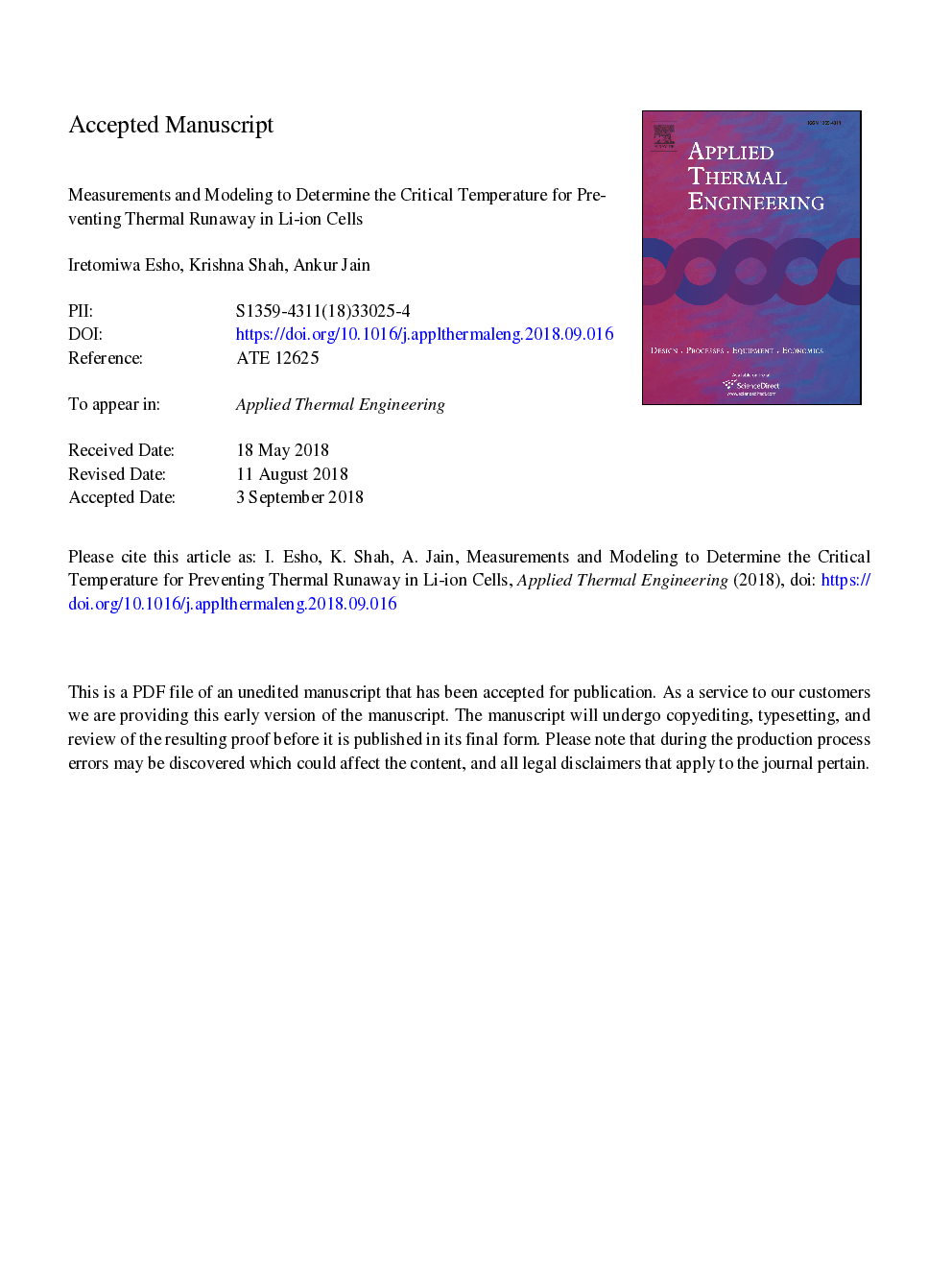| Article ID | Journal | Published Year | Pages | File Type |
|---|---|---|---|---|
| 10152001 | Applied Thermal Engineering | 2018 | 36 Pages |
Abstract
Li-ion cells are widely used for electrochemical energy conversion and storage, but suffer from safety problems due to overheating. At elevated temperatures, the cell enters a state of thermal runaway involving multiple heat-generating decomposition reactions that eventually lead to fire and explosion. Understanding the nature of thermal runaway, specifically the highest temperature that a cell can safely withstand, is critical for improving cell safety. This paper presents an experimentally validated method to predict the critical temperature based on the thermal balance between temperature-dependent heat generation, thermal conduction in the cell and heat dissipation on the cell surface. It is shown that for a single reaction case, the critical temperature can be determined from the root of a non-linear, transcendental equation involving parameters that characterize these processes. A computational model for a more realistic but complicated case of multiple reactions with reactant consumption is also presented. The predicted critical temperature is found to be in good agreement with experimental measurements on a thermal test cell in a wide range of thermal parameters. Trade-offs between cell thermal conductivity and convective heat transfer coefficient are shown to dramatically influence the critical temperature. Results presented here enable accurate prediction of the critical temperature of a Li-ion cell in a given thermal environment, and therefore, may contribute towards improved safety in the storage, transportation and operation of Li-ion cells.
Related Topics
Physical Sciences and Engineering
Chemical Engineering
Fluid Flow and Transfer Processes
Authors
Iretomiwa Esho, Krishna Shah, Ankur Jain,
